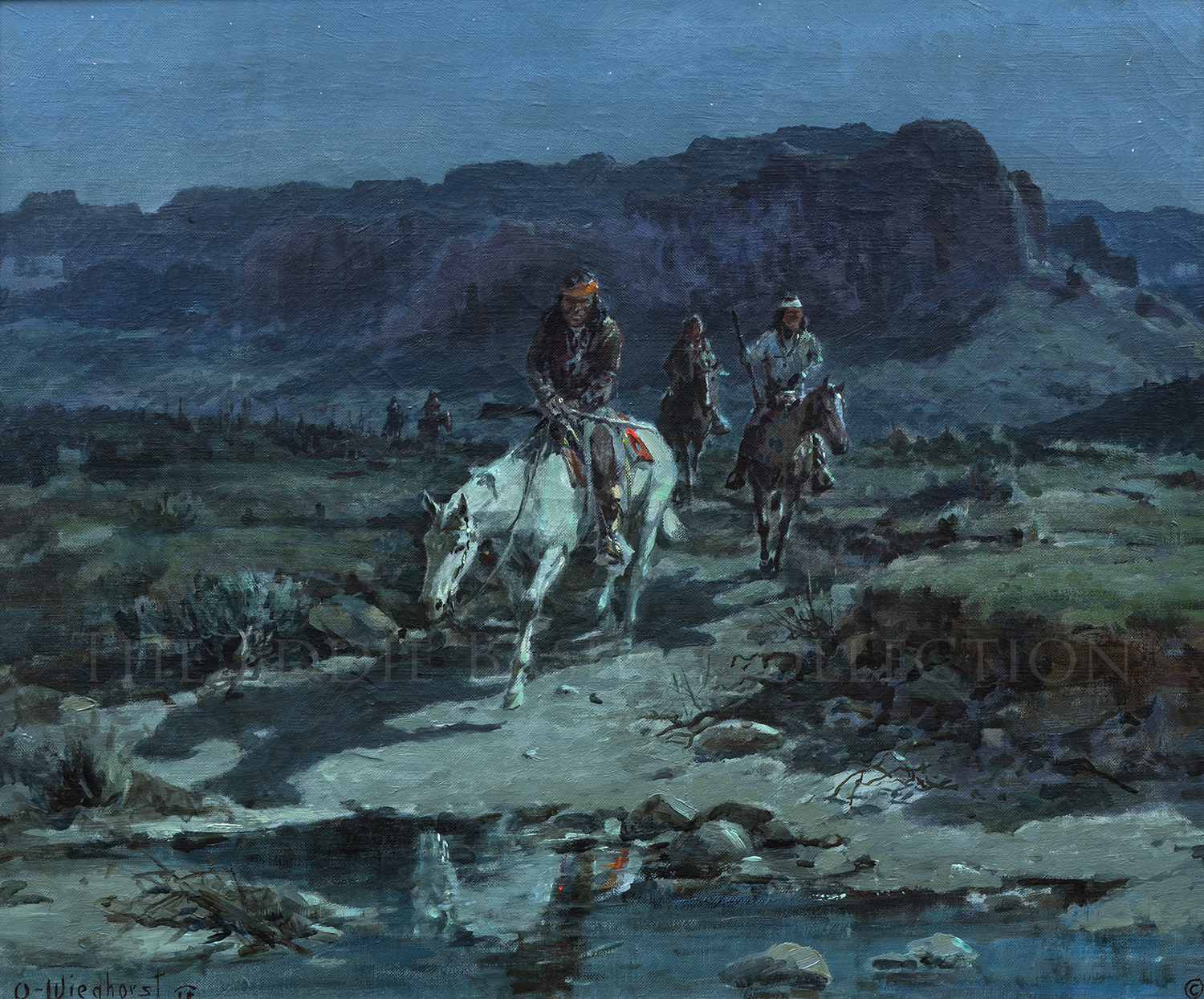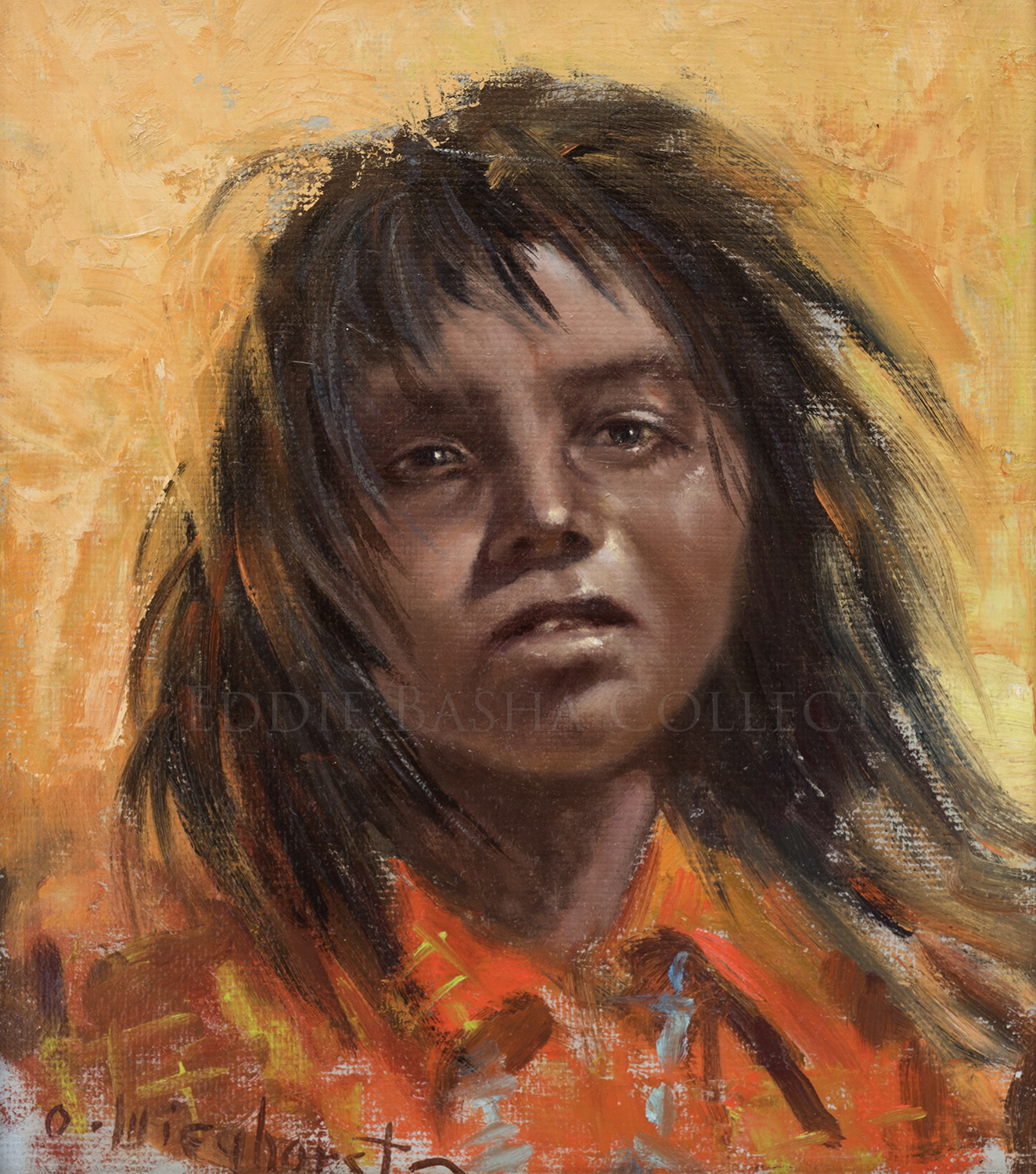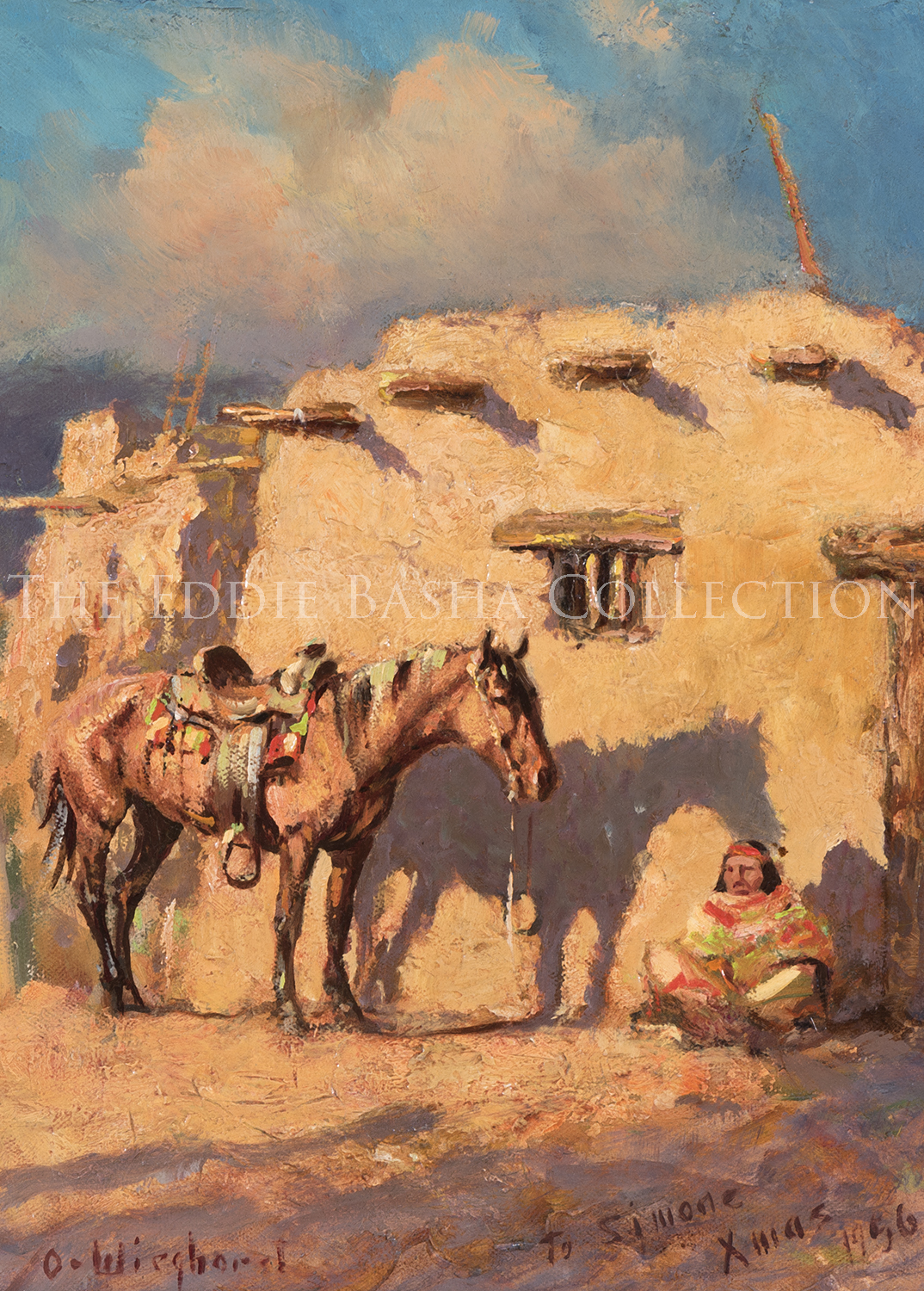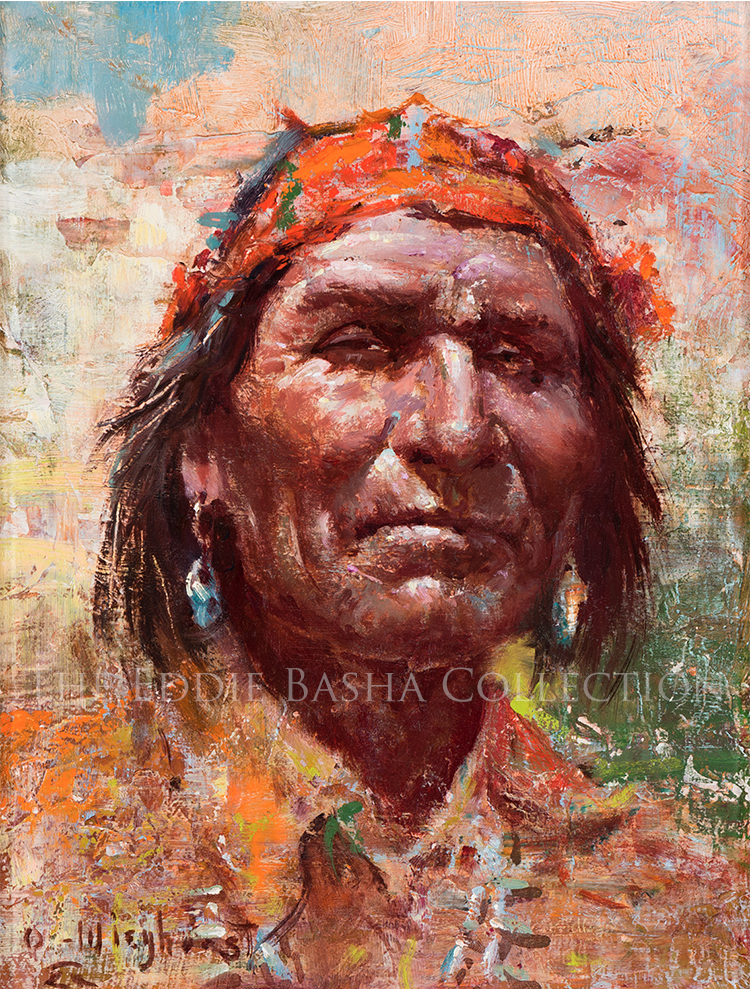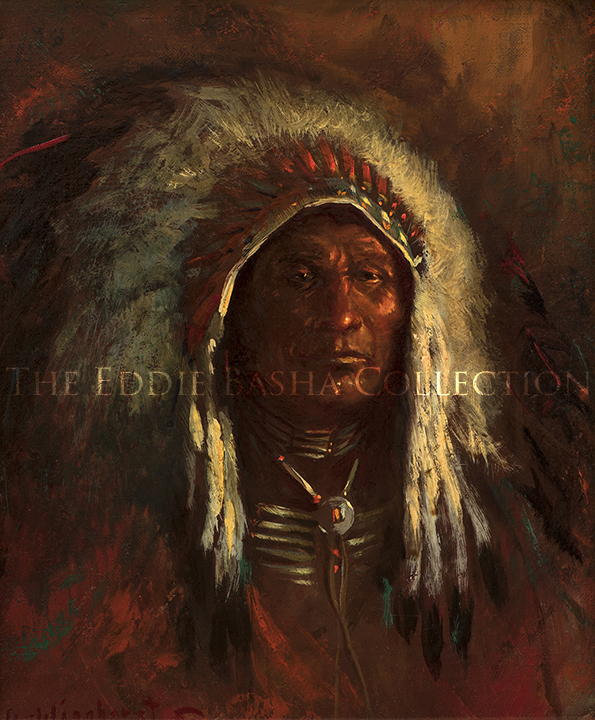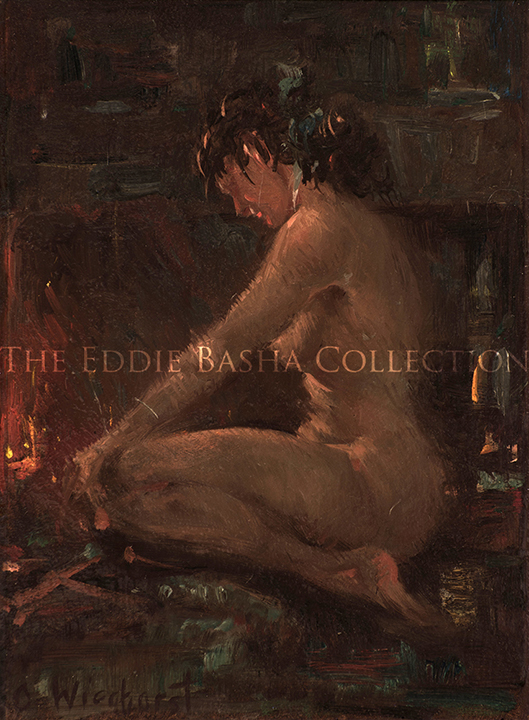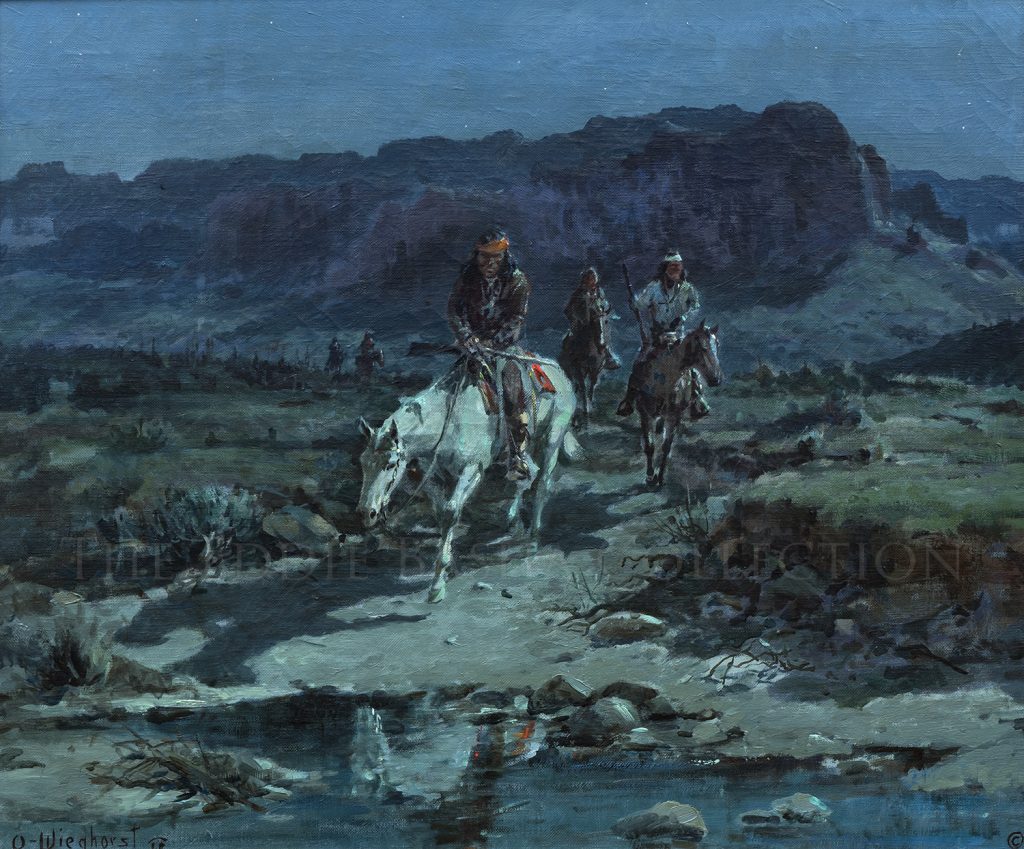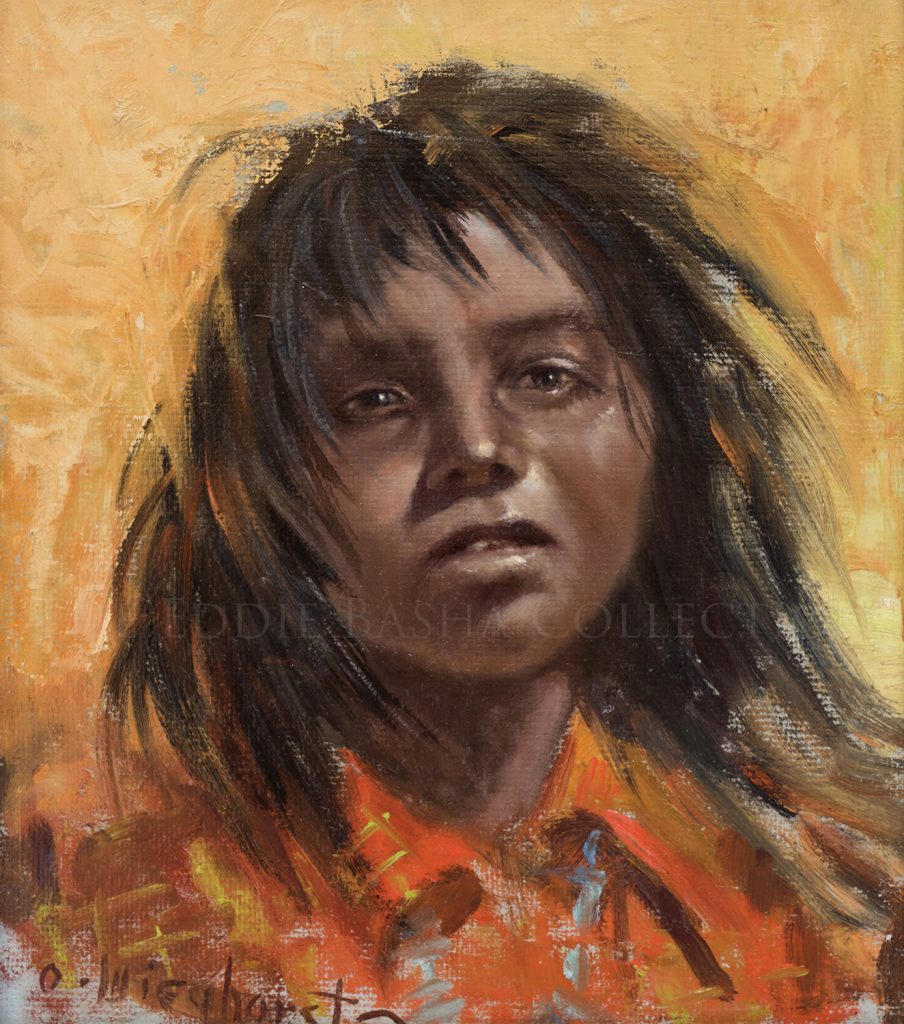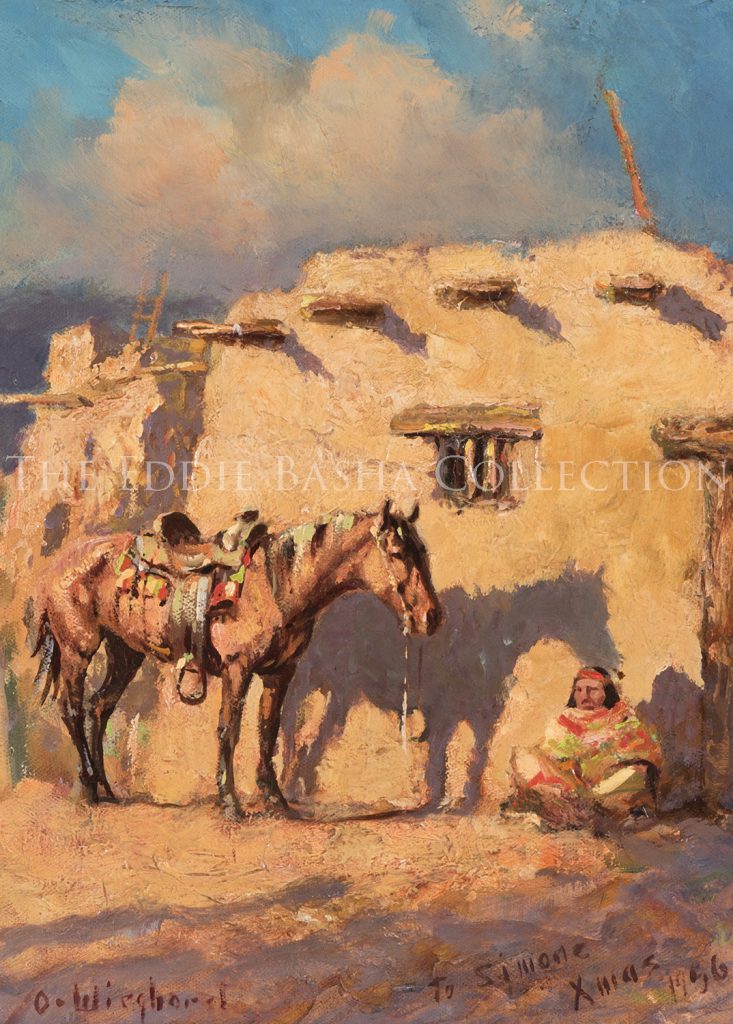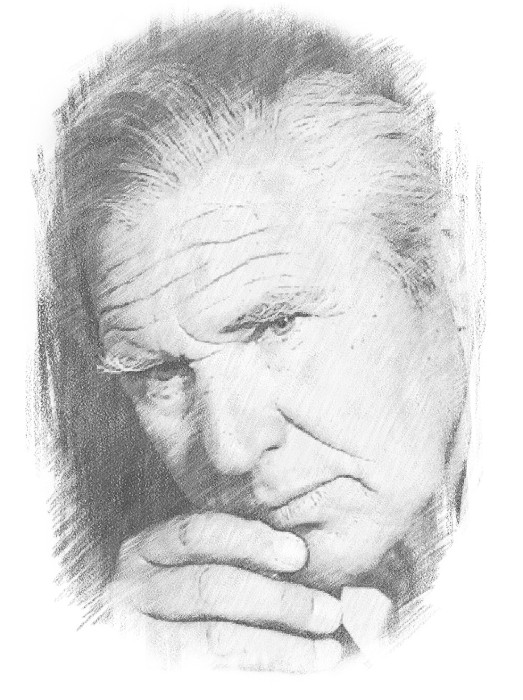
Olaf Wieghorst
(1899-1988)
Recognized as the “Dean of Western Painters”, Wieghorst’s work is often compared with that of Remington and Russel, and his paintings hang in the great public and private collections of western art.
Because of Mr. Wieghorst’s popularity among collectors and art investors alike, a select number of his paintings are offered as limited edition lithographs.
Olaf Wieghorst (1899-1988) was born in Viborg, Denmark, and became one of the premier interpreters of the American West. This small exhibition, featuring color lithographs from original paintings and reproductions of original pen and ink drawings, represents an impressive body of work by this Western and Danish-American artist.
Wieghorst, who was self-taught, was interested in creating works of art as well as documenting the story of the Old West. Painting in the same tradition of Remington and Russell, his artwork included themes of horses, Indian peoples, the U.S. Cavalry, cowboys as well as Southwestern landscapes.
He drew from his experiences as a trick rider for a circus, a member of the U.S. 5th Cavalry patrolling the Mexican border, a cowboy in Arizona and New Mexico, and a member of the New York City Mounted Police. He retired in El Cajon, California where he worked until his death in 1987, recapturing in his paintings and prints the West he had known as a trooper and cowboy. The exhibition is on loan from the Danish Immigrant Museum in Elkhorn, Iowa. (www.dkmuseum.org and www.wieghorstmuseum.org)
Samuels’ Encyclopedia Of Artists Of The American West by Peggy and Harold Samuels; Book Sales, Inc., 1985. says of Wieghorst:
(He) specialized in horses of the West and was known for as an illustrator and sculptor. Wieghorst was the son of a display artist and photograph retoucher who became an engraver. He was educated in the Copenhagen public schools. Interest in horses developed while he apprenticed in a store and on a farm so he began painting in 1916. While working as a sailor in 1918, he jumped ship in New York City where he enlisted in the U. S. Cavalry for a duty on the Mexican border. During his three years of military service as a horseshoer, he learned rodeoing and trick riding.
He was mustered out in Arizona, finding work as a ranch hand on the Quarter Circle 2C Ranch whose brand became Wieghorst’s insignia. In 1923, he returned to New York City, graduating from the Police Academy in 1925. Assigned to the Police Show Team of the Mounted Division, Wieghorst began to paint in his spare time. In 1940, he found an agent for his paintings which immediately sold them as calendar art and as Western illlustrations.
By 1942, he was receiving commissions for horse portraits and bronzes. In 1944, Wieghorst retired from the Police Department, settling in El Cajon, California in 1945. By 1955, he had a waiting list of buyers. “I try to paint the little natural things, the way a horse turns his tail to the wind on cold nights, the way he flattens his ears in the rain, seasonal changes in the coat of a horse, and psychology of his behavior. Horses have been my life.”
Source: Art World Western Heritage Gallery
